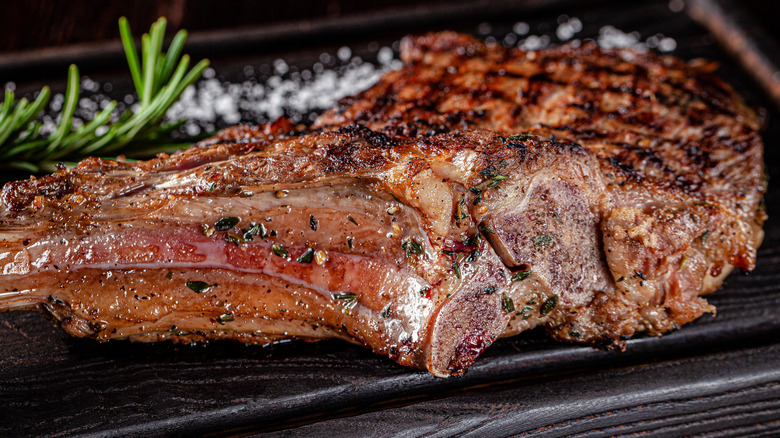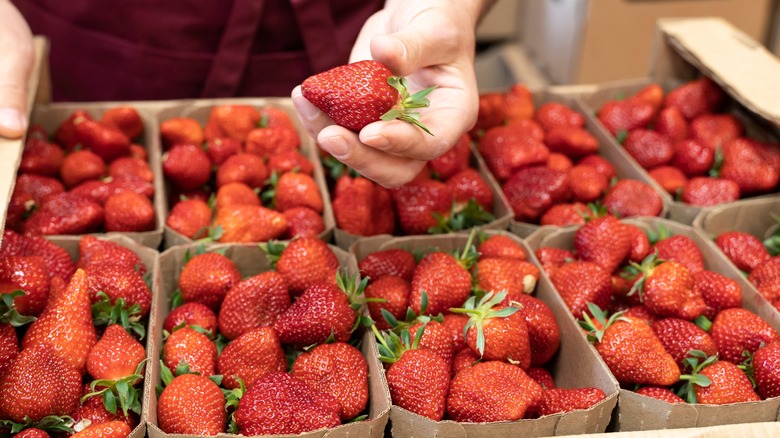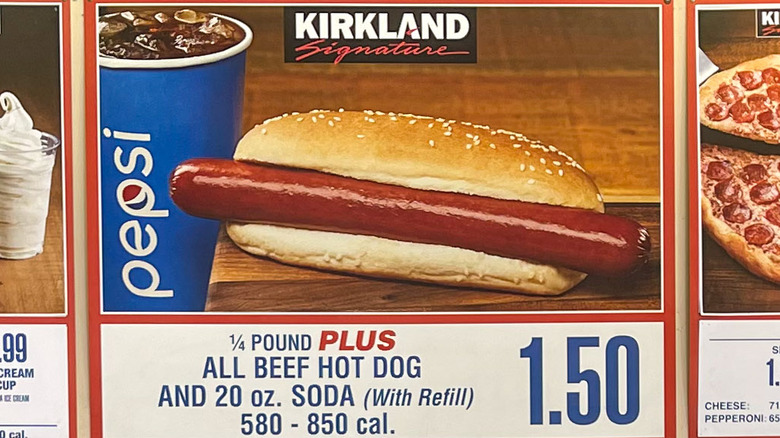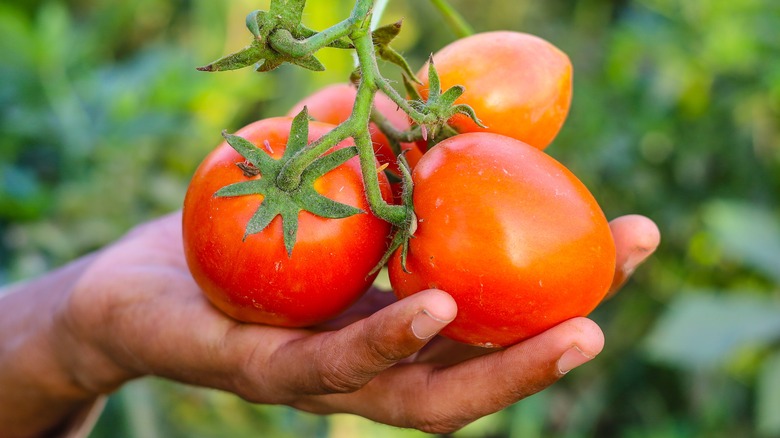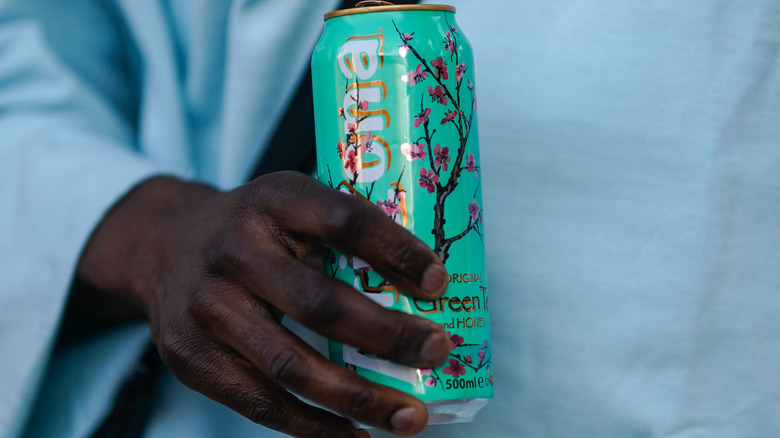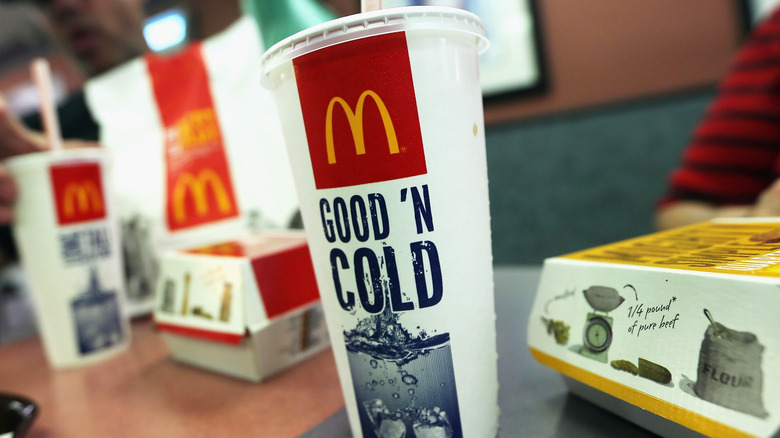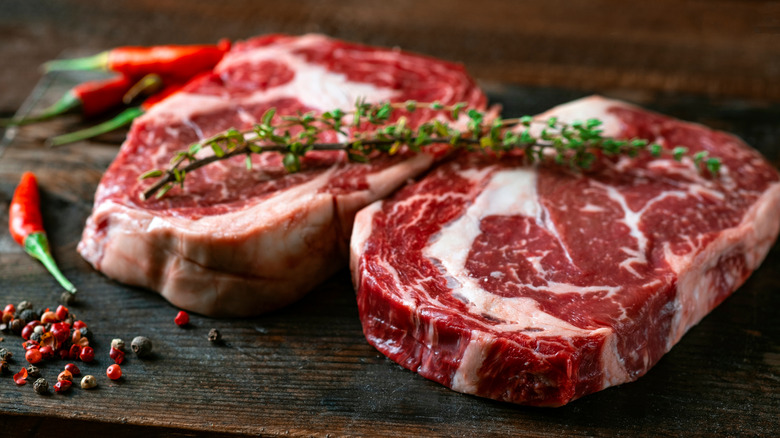6 Foods That Were Unchanged By Inflation In 2022
Probably the biggest news story of any kind in 2022 is the one that affected nearly every individual and commercial company in the United States and caused a ripple effect felt in almost every sector of society: inflation. The price of seemingly everything went up in the early 2020s, particularly food, with thousands of individual items seeing such significantly and troublingly larger price tags that it has led to much higher grocery bills than in years past. Thanks to a confluence of rising gas prices, steep shipping costs, labor issues, and other problems with the myriad factors that help manufacturers and retailers set prices, groceries and restaurant meals became much harder to pay for in 2022.
According to the U.S. Labor Department, the overall inflation rate exceeded 7% for the year. But per the USDA's Economic Research Service, food became even more expensive than that, with the average random food costing 10.6% more in late 2022 than it did in late 2021. But not every food reached eye-popping levels of high prices or unaffordability. A handful of foods, packaged products, and raw materials, for whatever reason, saw their prices stay pretty much the same, or even unchanged. Here are some of the most popular foods that resisted the great inflationary forces of 2022.
1. Strawberries
Fruits and vegetables — full of nutrients, vitamins, and fiber, and part of almost any healthy diet — weren't immune to the big inflation trends of 2022. Per the U.S. Bureau of Labor Statistics, both fresh and canned produce saw major price hikes. Tinned fruit went up in price by an average of 12% from June 2021 to June 2022, while common fruits sold fresh cost more too, with oranges and bananas enduring 11% and 7% increases, respectively.
But another well-distributed and popular fresh fruit saw its price go the other direction. Strawberries, which, according to YouGov are the most popular fruit in the United States as of 2022, are even more irresistible thanks to their very reasonable price. In June 2022, a pint of supermarket strawberries cost an average of $2.31 in the U.S.; by July 2022, that price had dipped to about $2.20.
What gives? It's mostly a matter of supply and demand. The marketplace demonstrated a high but reachable demand for strawberries while production was particularly robust, thanks to good weather conditions in California (per AgronoMetrics) and on the East Coast (via Lancaster Farming) for growing the fruit.
2. Costco hot dogs
At any given Costco at any given time, somebody is looking at a giant price tag and realizing that they're getting a case of something for a shockingly good deal. Even during periods of significant inflation, the economic benefits of buying in bulk are in full effect at Costco. The hundreds of stores offer relatively lower prices on groceries and housewares, and, via its snack bars at the front of stores, fast food. The Costco Food Court has always been a place for crowd-pleasing comfort foods at a curiously low price, and it still is, even after the 2020s inflation kicked in. According to the New York Post, Costco's chicken bake (a pastry stuffed with chicken chunks, cheese, bacon, dressing, and scallions) cost rose by a third, from $2.99 to $3.99. Meanwhile, a refillable soda foundation cup saw its price go from 59 cents to 69 cents.
Those hikes are on account of higher food and ingredient costs, but Costco resisted raising the price of its famous Food Court hot dog combo. A very large wiener on a kaiser bun — with plenty of free condiments and a self-serve soda, too — still costs, in spite of everything, $1.50, just like it has since 1985, according to The Takeout. In May 2022, Costco senior VP Robert Nelson went so far as to publicly announce that the company wouldn't be charging more for a hot dog with a soda anytime soon, if not ever.
3. Tomatoes
It cost more to eat healthy in 2022, as roughage witnessed across-the-board hikes on vegetables of every kind and their preparation, be they frozen, canned, or fresh. According to the U.S. Bureau of Labor Statistics, it took a bit more money to make a salad after a trip to the grocery store, with lettuce going up in price by 11% and fresh vegetables on the whole getting hit with a 7% increase, for example. The only predominant, best-selling vegetable that didn't get a noticeable rewritten price tag in the produce section was the tomato. Sold fresh in all of its various kinds, from cherry to beefsteak to vine-ripened, tomatoes experienced a marginal, negligible price hike of just 1% from the summer of 2021 to the summer of 2022.
According to CNN, the consumer economic relief in this one area could be short-lived. By the end of 2022, the tomato industry in California indicated that prices would go up due to a less-than-overabundant harvest as a result of ongoing water management and scarcity issues.
4. AriZona Iced tea
The price for a huge, 23-ounce can of AriZona flavored and sweetened iced tea is so noticeably low, and has been for so long, that it entered the cultural conversation as one of the best and most baffling deals in the crowded and competitive prepackaged beverage sector. AriZona is arguably better known for how cheap its tea is, not necessarily for the quality or taste of the product, which is sometimes somehow cheaper than regular water — an ingredient in the tea. In a 2022 interview with CNBC, chief marketing officer and company co-owner Spencer Vultaggio said, "For as long as we can, we're going to hold our price."
AriZona products have remained at a fixed, low price since 1992, possible in part thanks to cost-cutting measures like eschewing advertising and marketing. According to the Los Angeles Times, the AriZona company can still make a profit charging less than a buck for its Big AZ Can in the face of rising costs of main sweetener high fructose corn syrup and packaging, in the form of aluminum. Accounting for inflation, a dollar in 1992 is the equivalent of two dollars in 2022. The company is making less money per unit than it has in years past, but the Big AZ Can remains profitable and is so crucial to brand identity.
5. $1 soft drinks at McDonald's
As the economic phenomenon of inflation has led to increased prices for the raw materials and ingredients, the cost of cooking one's own meals at home has risen, too. According to the Bureau of Labor Statistics (via CNN), grocery costs rose by 13% overall between September 2021 and September 2022, while restaurant costs moved up by 8.5%. The average price of selections at McDonald's went up even more, by about 10% in the same period, and yet across the U.S., revenues at established McDonald's outlets jumped by 6.1%. McDonald's has historically fared well during economic downturns; in the 2008 and 2009 American recession, McDonald's lured customers with its "Dollar Menu," but in the 2020s it's dealing with different financial issues, such as significantly steeper food and labor costs.
According to Bloomberg, Coca-Cola has instituted a 12% price hike for its canned and bottled beverages. But that hasn't affected the price of fountain drinks at McDonald's. Since 2017, most locations have offered any size soft drink, including Coke products, for $1. With the inflation happening elsewhere on its menu, the beverages at McDonald's still only cost a buck. It's likely on account of how McDonald's enjoys a big profit margin on the drinks anyway. In good times at least, according to The Motley Fool, those beverages carry a profit of about 90%. So even after inflation has been factored in, a soft drink still only costs McDonald's a few cents.
6. Steak
One of the biggest inflationary offenders is produce. It takes a lot of time, labor, and money to raise animals that are then processed into meats sold at the butcher block, and producers felt the sting of inflation, passing the increased costs on to retail outlets and customers.
According to the U.S. Bureau of Labor Statistics, in 2022 chicken experienced a 20% cost increase and hot dogs went up 16%, while ground beef saw its price soar by 10%. However, one beef-based protein source actually saw its costs not only stabilize but decrease, one of the few foods with a downward trending price: premium and already pricy cuts. The cost of a nice steak in a grocery store went down by 0.3% in 2022. According to the Wall Street Journal, prices of beef steaks, like ribeyes and New York strips, dropped over the course of the year, partially and ironically as a reaction to inflation.
Because everything else costs so much these days, many consumers don't have as much discretionary food income to spend on things like premium beef. That lack of demand led to a slight surplus of excellent steak, which drove down the cost.
